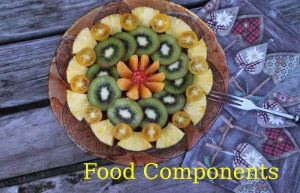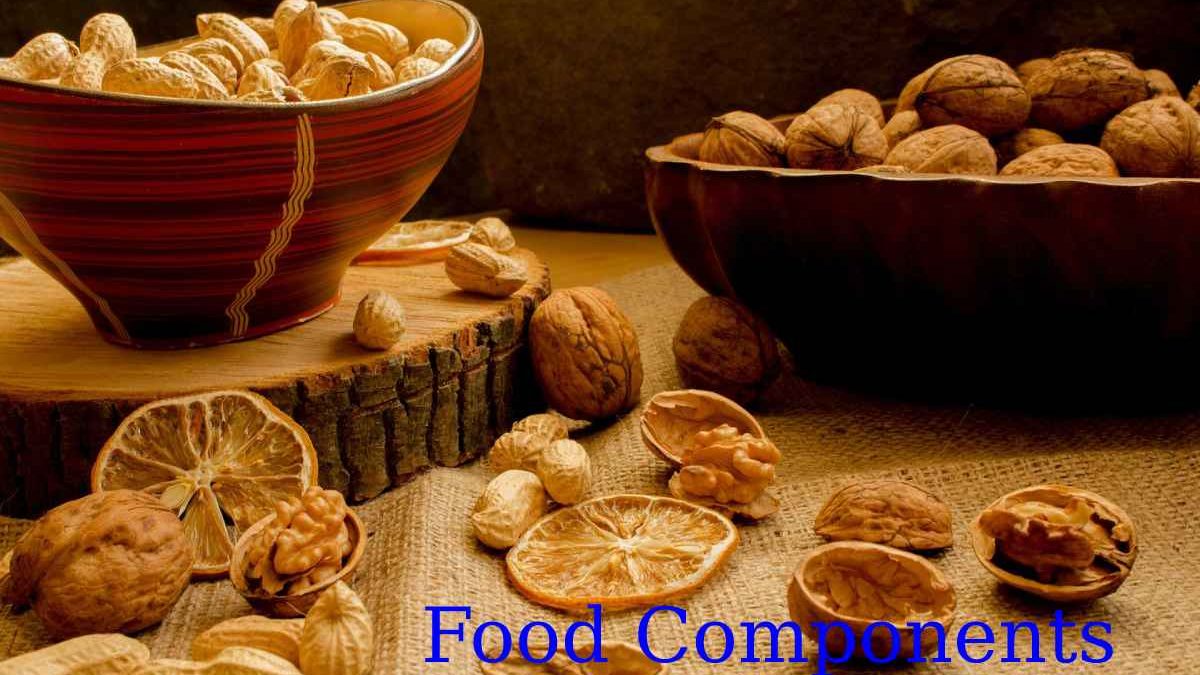There are some essential food components for the maintaining the vital functions of the human being are recognize in food,
- protein
- carbohydrates
- vitamins
- minerals
- fats
- Fiber
Table of Contents
Nutrients
Food composition tables compare the nutrient content of different foods, prepare balanced diets, select foods rich in particular nutrients, etc.
A first distinction is made between the components of any food: the macronutrients, among which are proteins, carbohydrates and lipids, and the so-called micronutrients that are only present in minimal quantities. Also these include vitamins and minerals.
- Another classification is that of nutrients in terms of their function in metabolism.
- Energy nutrients are use as cellular fuel and practically coincide with the group of macronutrients.
- We use plastic nutrients to build and regenerate our bodies and are mainly proteins.
- Nutrients that have regulatory functions facilitate and control the biochemical reactions inside living beings. This group is made up of vitamins and minerals.
Meet the nutrient needs of each period. For example:
In the growth stage, foods that provide plastic nutrients or form the structure and body organs are require.
More energy foods are need to supply the necessary calories to develop greater physical work in youth.
In maturity, more regulatory nutrients are required, capable of normalizing all the processes in the body.
They are called nutrients and are the components of food that can be use by our body to make life possible and are distribute unequally in them. They perform different functions in our bodies depending on their nature.
Nutrient Characteristics

Carbohydrates
They are the primary source of fast energy for our body. If we compare them with a car, carbohydrates would be the gasoline that allows it to run. The body has to transform carbohydrates into their basic food components units so that the cells can use them (glucose). Also when we talk about “blood sugar level”, we mean glucose. An adequate supply of this nutrient implies maintaining weight and body composition by preventing the use of proteins as an energy source.
Energy Nutrients
carbohydrates or carbohydrates and fats or lipids. They release energy with which the body manages to maintain its vital functions (pumping blood, breathing, regulation and maintenance of body temperature) and allow the development of the activity.
Plastic nutrients (constructive): proteins, mainly. With them, the structure of the organism is form, the tissues are renew and repair, our defence system is kept in reasonable condition
Proteins
They are the primary material for constructing our tissues, although they also perform other essential functions. The organism’s proteins are like the bodywork and the car’s mechanisms.
Vitamins: They are need in small amounts for growth, maintenance of life and reproduction. We know 13 vitamins that are essential for man. The body itself cannot synthesize them, so we must ensure their contribution through food.
Fiber
Performs essential physiological functions such as stimulating bowel movements. Therefore, fiber is indicate in cases of constipation. Also there is also an association between the incidence of cardiovascular diseases and certain types of cancer and populations that have low-fibre diets.
Due to their composition, all foods have properties that are good for developing certain functions in our body, Also it is essential to know which of them should be taken or not at any given time.
A portion of food is a product or substance of any nature (animal or vegetable, solid or liquid, natural or processed. That, once ingested, provides assimilable materials that fulfil a healthy energy function in the body. These assimilable materials are the nutrients.
The nutrients that human beings need to develop their function are around 50. They are group into two large groups: Macronutrients, made up of proteins, carbohydrates, fats, and micronutrients, vitamins and minerals.
Other functions of proteins: They contribute to organic balance by transporting fats and oxygen. They are part of certain hormones and immunoglobulins or antibodies responsible for the body’s defence.
Food sources of protein: animal origin (complete proteins): meat, fish, eggs and dairy. Plant-based (incomplete proteins): legumes, cereals and nuts.
They facilitate and control the various physiological functions so that all the processes in our body run normally.
Fat-Soluble
These vitamins do not melt in water, but in fact, so the diet must include sufficient fat daily. The body can supply them in the liver and adipose tissue. Hence, its supplementation is carry out exclusively under medical prescription since the excess can have negative consequences for health (for example, a quantity of vitamin A during pregnancy can cause malformations in the fetus).
Water-Soluble
group B vitamins and vitamin C or ascorbic acid. Also they are soluble in water, so significant losses can occur when foods are soak, boil, or come into contact with plenty of water. The body cannot store them and eliminates the excess through the urine, so it is necessary to get a sufficient food supply every day.
Conclusion
For all these reasons, its also eating a healthy and balanced diet is essential to maintain the proper functioning of our body.


